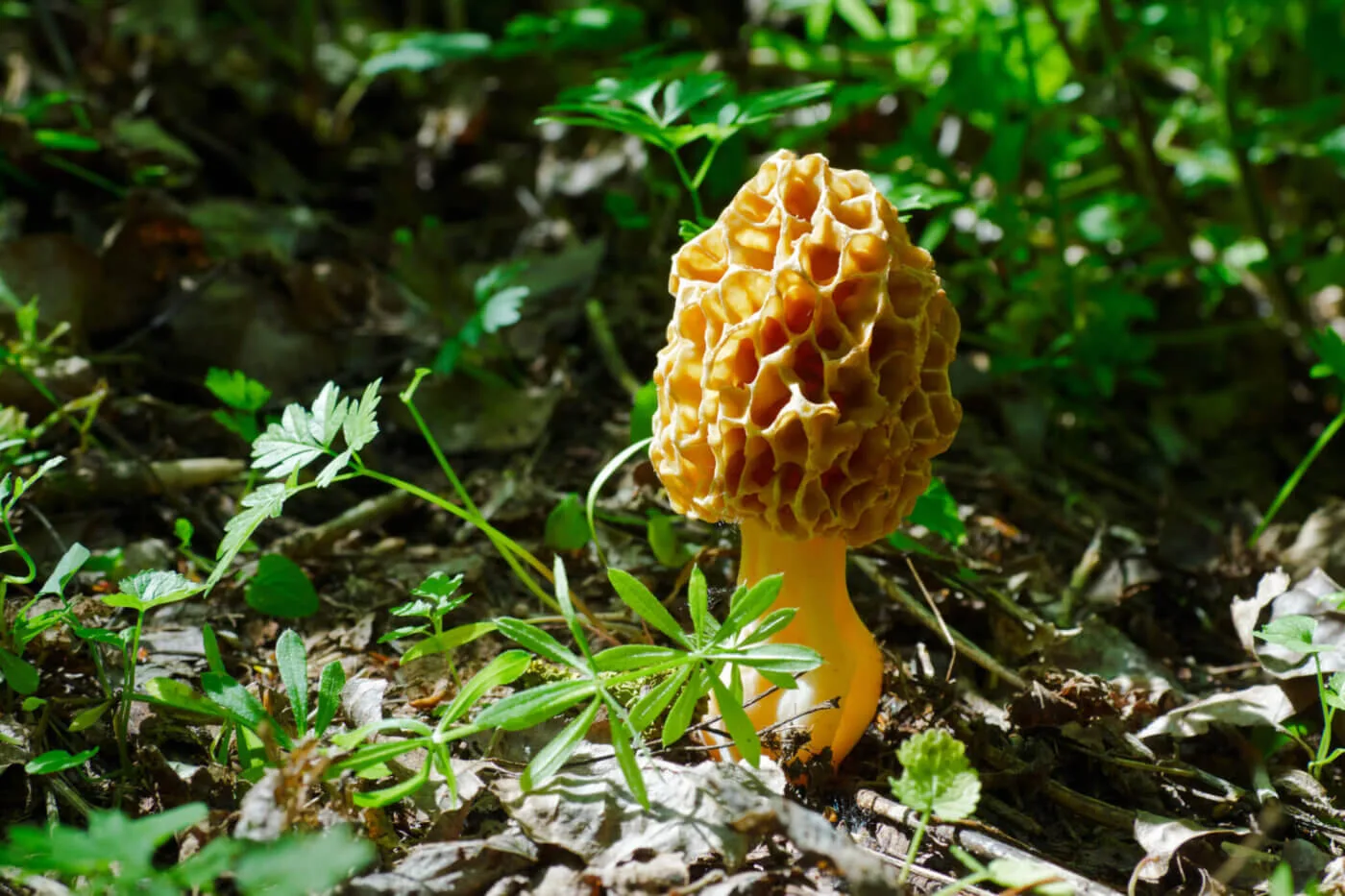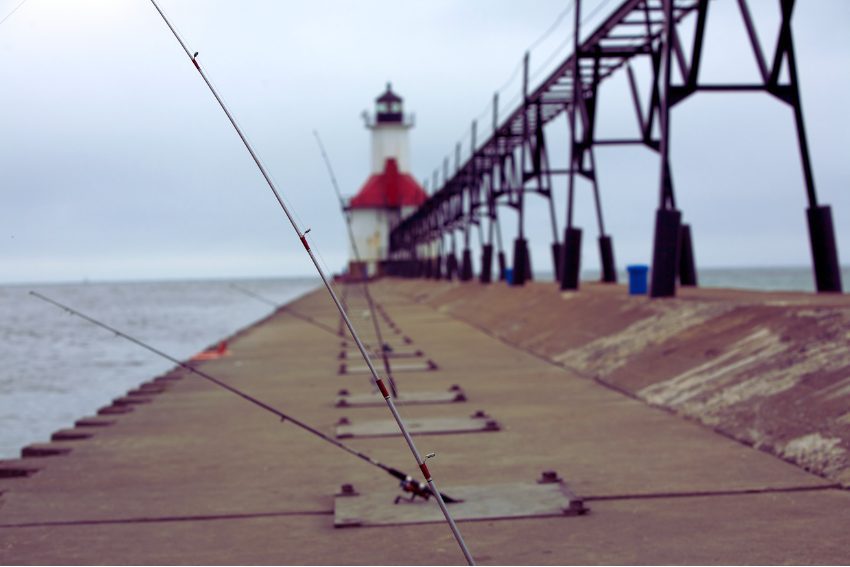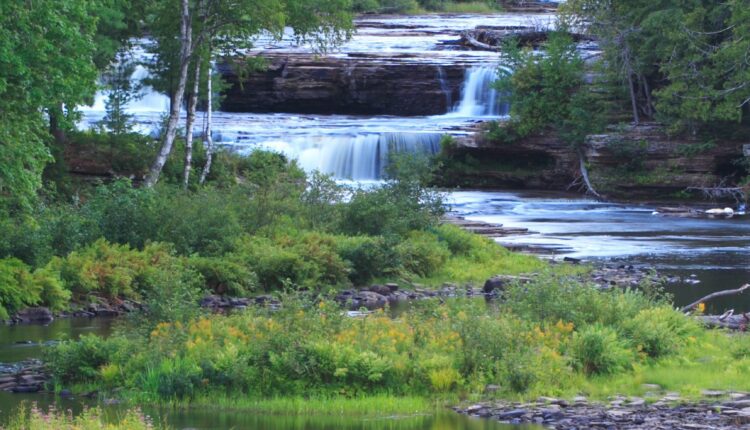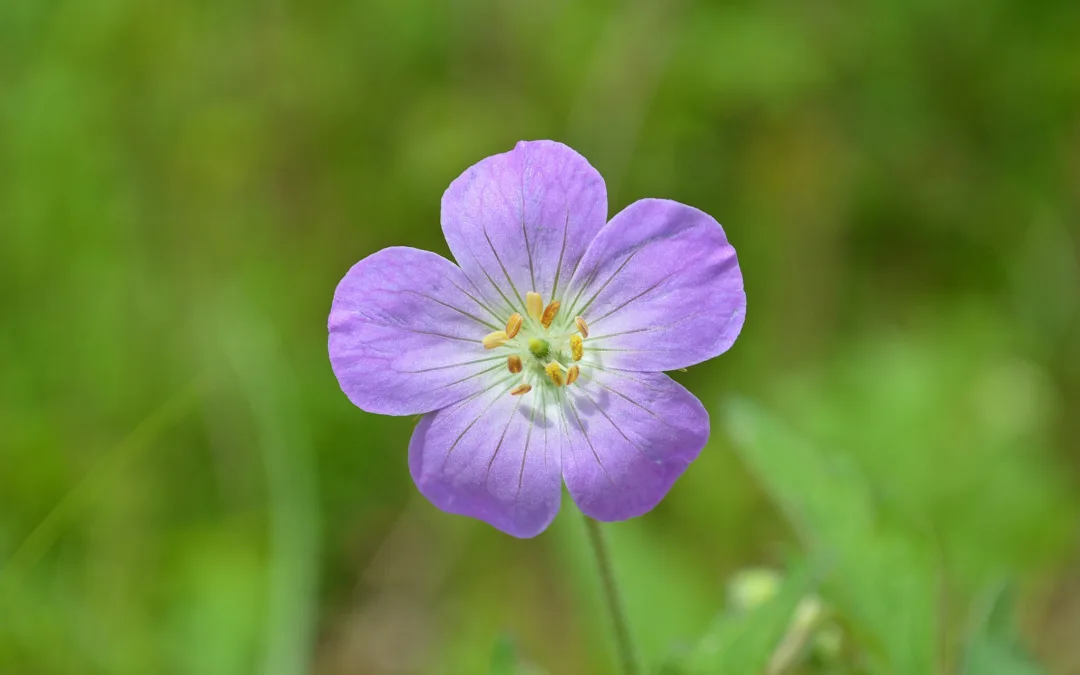
While May is Michigan’s “Morel Month,” the actual fruiting period begins in late April and goes until mid-June. Before heading out to hunt, it’s important to know how to identify any wild mushroom before eating it.
Need to Know
- May is morel mushroom month in Michigan, but the actual fruiting period begins in late April and runs until mid-June, depending on the location and species.
- Michigan has 2,500 species of wild mushrooms. Morels are the easiest to find and safest to harvest.
- Know the difference! Imposter morel species can be poisonous.
MICHIGAN—Foraging for wild-grown mushrooms is a family-friendly way to explore the outdoors and bring nature’s bounty to the table. Of the 2,500 species of wild mushrooms found in Michigan, morels are among the easiest to spot and safest to harvest for mushroom hunters of all skill levels.
However, it’s important to know how to identify any wild mushroom before heading out to hunt and eat it. Poisonous mushrooms do exist, and Michigan grows at least 50 known species of them.
Morels come in shades of gray, black, and yellow. True Michigan morels are most easily distinguished by their long caps pitted with little hollows, which look like honeycombs. These honeycombs are one characteristic that all species of true morels have in common. False morel species may be ridged, wrinkled, waved or even quite smooth, but they do not have honeycomb-like pits.
True morels are also hollow inside, usually standing between 1 and 4 inches tall and are about 1 to 2 inches around. Here is more information on different kinds of true morel and false morel species, provided by the Department of Natural Resources.
While May is Michigan’s “Morel Month,” the actual fruiting period begins in late April and goes until mid-June, depending on the location and species. Like all wild mushrooms, morels require specific conditions of temperature and moisture to grow, with warm and wet conditions being ideal. When you find them, be sure to pinch off the stem at ground level so that the “roots” remain intact for regrowth.
According to Mi-Morels map, large burn sites in forested areas are ideal for morel mushroom hunting–especially around dying or dead tree areas where jack, white or red pine once grew. Grassy and other non-forest areas are not as likely to produce morels. But some morel hunters report finding them in fields, landscaping mulch in busy metro areas, and old orchards, in all areas of Michigan.
To find a morel mushroom, the best thing to do is to walk slowly among the trees while keeping your eyes on the forest floor a few feet ahead to look for signs of the coveted wild fungi. The DNR recommends making your first several mushroom hunts with an experienced guide. The DNR has many detailed resources and tips for hunting morel mushrooms on their website. Organizations like the Michigan Mushroom Hunters Club have also shared some great basic knowledge for beginners. An important tip to remember is that morels found on public land are for personal use and cannot be sold.

Michigan’s State & National Parks are about to get a whole lot more accessible
National Park Mobility Challenge grants will improve accessibility and visitor experience at Michigan's State and National Parks. On Monday, July...

Whitmer partners with Army Corps to block invasive species from the Great Lakes
BY KYLE DAVIDSON, MICHIGAN ADVANCE MICHIGAN—Gov. Gretchen Whitmer on Monday announced that the state would cosponsor an effort with the US Army...

Conservation advocates push for renewable energy to help preserve Michigan wetlands
BY LUCY VALESKI, MICHIGAN ADVANCE MICHIGAN—A mix of state-level policies and funding can help Michigan preserve wetlands and reduce flooding,...

7 waterfalls in Michigan you can actually swim in
Michigan is known for its lakes (it’s nicknamed the Great Lakes State after all), but it’s also home to tons of rivers, streams, ponds, and more. In...

This Earth Day, stop and smell these 5 flowers native to Michigan
Ah, spring in the Mitten. After a long wolverine winter, everyone is happy to enjoy warmer weather and later sunsets, and are maybe even starting to...





